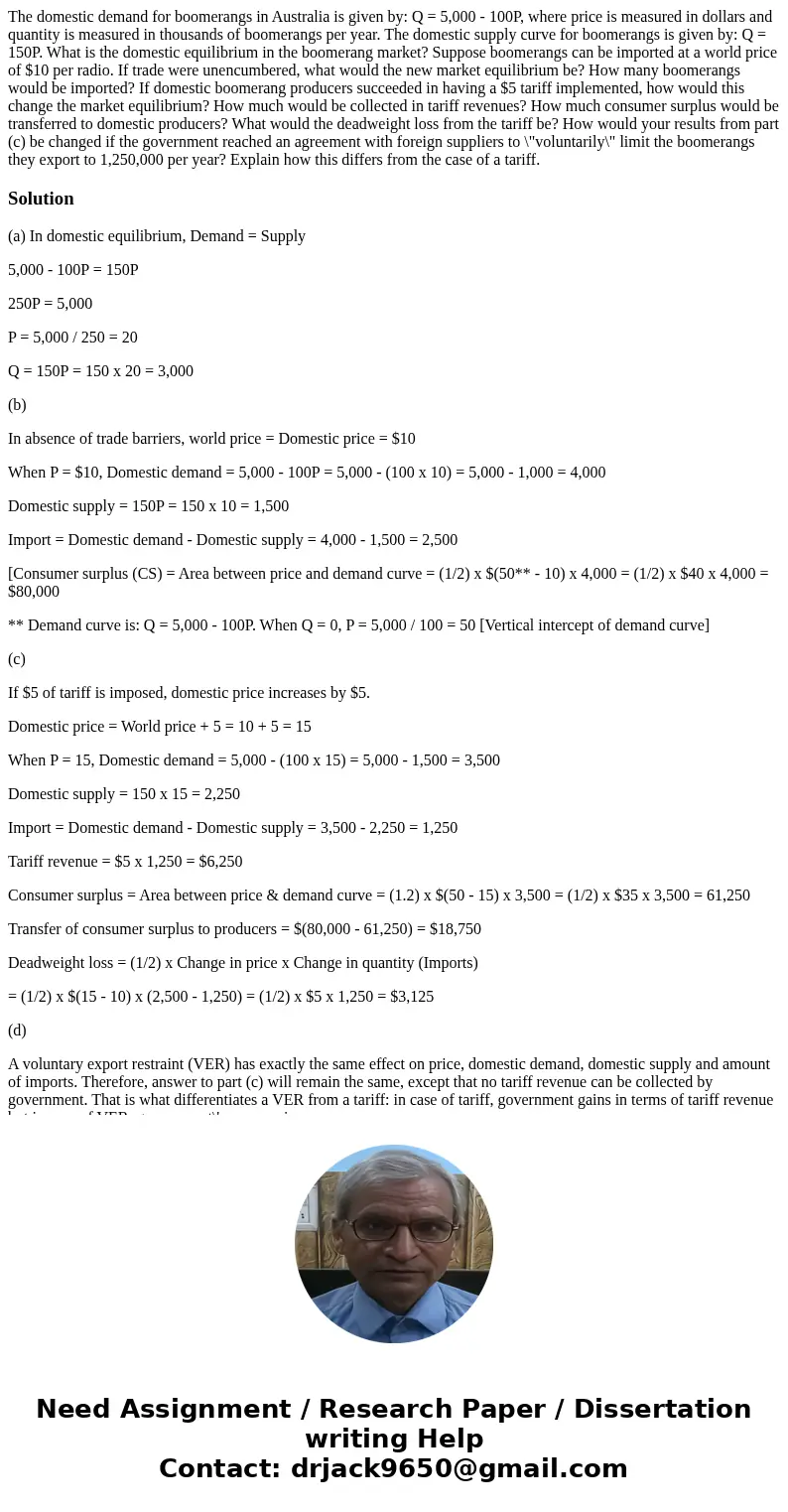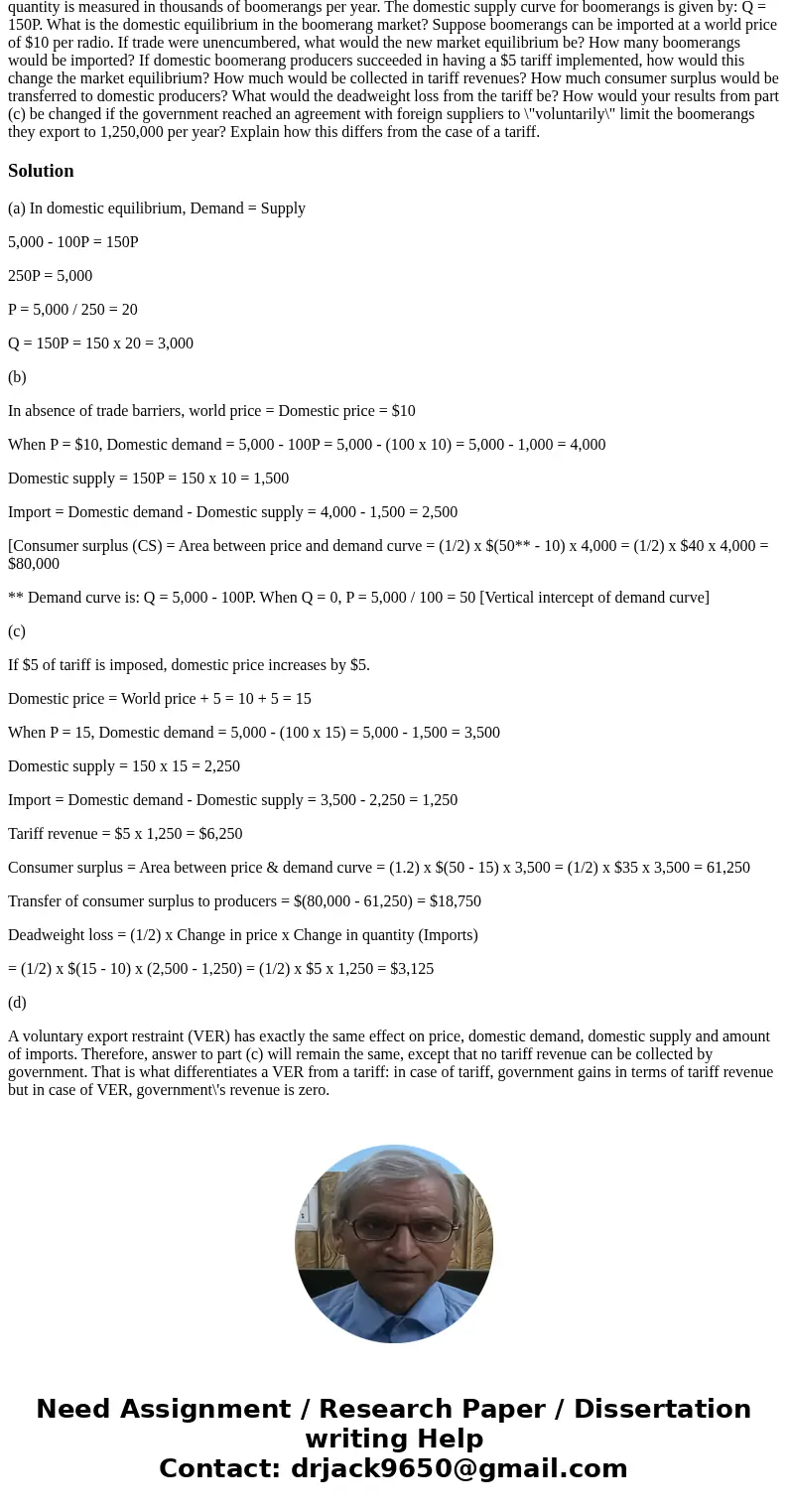The domestic demand for boomerangs in Australia is given by
Solution
(a) In domestic equilibrium, Demand = Supply
5,000 - 100P = 150P
250P = 5,000
P = 5,000 / 250 = 20
Q = 150P = 150 x 20 = 3,000
(b)
In absence of trade barriers, world price = Domestic price = $10
When P = $10, Domestic demand = 5,000 - 100P = 5,000 - (100 x 10) = 5,000 - 1,000 = 4,000
Domestic supply = 150P = 150 x 10 = 1,500
Import = Domestic demand - Domestic supply = 4,000 - 1,500 = 2,500
[Consumer surplus (CS) = Area between price and demand curve = (1/2) x $(50** - 10) x 4,000 = (1/2) x $40 x 4,000 = $80,000
** Demand curve is: Q = 5,000 - 100P. When Q = 0, P = 5,000 / 100 = 50 [Vertical intercept of demand curve]
(c)
If $5 of tariff is imposed, domestic price increases by $5.
Domestic price = World price + 5 = 10 + 5 = 15
When P = 15, Domestic demand = 5,000 - (100 x 15) = 5,000 - 1,500 = 3,500
Domestic supply = 150 x 15 = 2,250
Import = Domestic demand - Domestic supply = 3,500 - 2,250 = 1,250
Tariff revenue = $5 x 1,250 = $6,250
Consumer surplus = Area between price & demand curve = (1.2) x $(50 - 15) x 3,500 = (1/2) x $35 x 3,500 = 61,250
Transfer of consumer surplus to producers = $(80,000 - 61,250) = $18,750
Deadweight loss = (1/2) x Change in price x Change in quantity (Imports)
= (1/2) x $(15 - 10) x (2,500 - 1,250) = (1/2) x $5 x 1,250 = $3,125
(d)
A voluntary export restraint (VER) has exactly the same effect on price, domestic demand, domestic supply and amount of imports. Therefore, answer to part (c) will remain the same, except that no tariff revenue can be collected by government. That is what differentiates a VER from a tariff: in case of tariff, government gains in terms of tariff revenue but in case of VER, government\'s revenue is zero.


 Homework Sourse
Homework Sourse